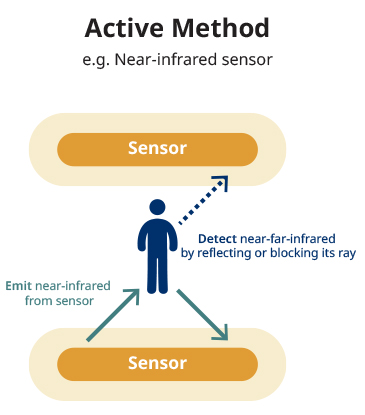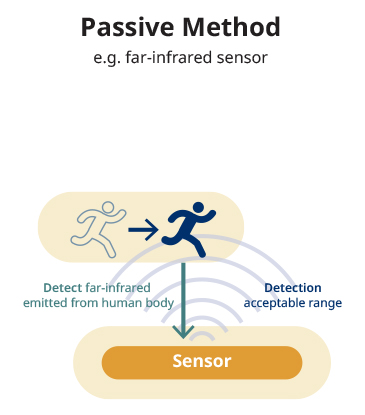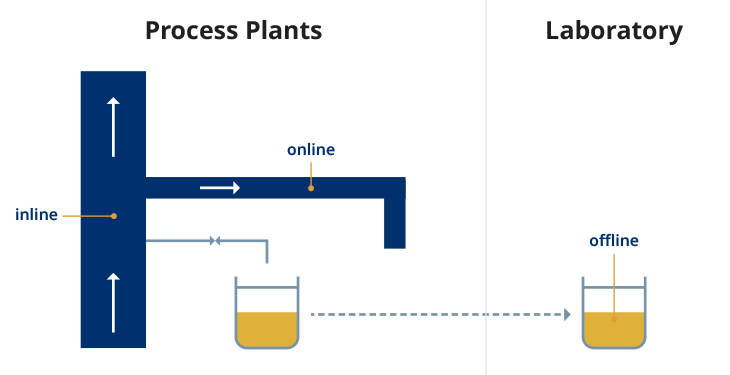Pressure Transmitters
The accurate and stable measurement of process pressure with Yokogawa Pressure Transmitters supports the safe, reliable, and profitable operation of your plant.
Learn More >>There are many different types of sensors, but sensors can broadly be classified based on the measurement method, the features of the object being measured, the characteristics of the sensor and their applications.
The sensor measurement method is divided into “Active Method” which gives a signal to the measurand and receives the reflected signal, and “Passive Method” which only receives the signal emitted by the measurand.
Sensors that give a signal to the measurand and detect its reflection are active sensors. Requiring an external source of energy, they give a signal such as light, electromagnetic wave, radiation, and sound to the measurement object, and receive its reflection, transmission, and absorption, and detect the feature quantity of the measurand.
On the other hand, passive sensors do not need their own source of energy and detect a measurand by receiving a measured signal from the measurand.
A typical example of the difference is a security infrared sensor. They are selected according to the intended use and installation location.


Additionally, based on the process sampling and monitoring frequency, sensors can be classified as “Inline Analysis”, “Online Analysis” and “Offline Analysis”.
Inline analysis is a method in which the sensor or detector of process analyzer is directly in contact with the measurement object, such as the reaction tank or flow path to be measured, and detecting, analyzing, recording, transmitting and monitoring are performed continuously. Key characteristic of these sensors for inline analysis is that they can work in a consecutive feedback loop with no time-lapse and basically require real-time or high-speed performance, non-destructive measurement and high tolerance. This is the most desirable method for analyzing and monitoring manufacturing processes, because sensors can be placed in the manufacturing process line without sampling.
Online analysis is a method in which automatic sampling and analysis are performed at all time. Sampling equipment, sensors, and process analyzers are placed near the measurement object. This method is used for composition that require rapid changes in composition, or continuous monitoring, like a chemical composition.
In offline analysis, samples are taken for analysis and transported to a laboratory where related sensors and analyzers are located. And these transported samples are analyzed by these instruments. This method is used for precision analysis that are time consuming or for analyzing multiple ingredients out of small amount of sample.

It is important to note that the differences between these sensors doesn’t make one type superior or inferior. These are just different systems to be used for specific purposes.
A broader way of differentiating sensors is by the various attributes (measurand) of a domain, they are used to measure.
| Detection signal | Detection quantity / Measurand of various attributes |
|---|---|
| Mechanical | Pressure, Flow rate, Vibration, Distance, Velocity, Acceleration, Force, etc. |
| Thermal | Temperature, Heat, Heat Flux, Heat Capacity, Thermal Conductivity, etc. |
| Electrical | Voltage, Current, Electric Field, Charge, Resistance, Capacitance, etc. |
| Magnetic | Magnetic Flux, Magnetic Field, Magnetic Moment, etc. |
| Radiation | Infra-Red, X-Rays, Visible, Ultrasonic, Acoustic, Radio Waves, etc. |
| Chemical | pH, Ion, Concentration, Moisture, Gas, Oxygen, etc. |
| Biological | Taste, Odor, Proteins, Glucose, Hormones, Enzyme, Microbe, etc. |